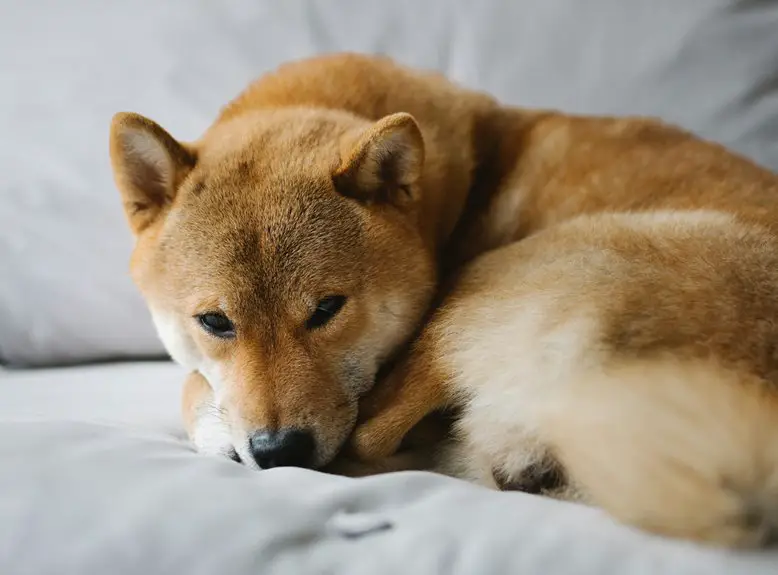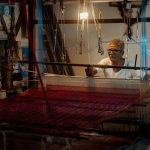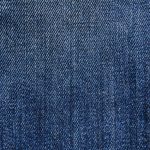You probably want to know if a dog can tear Kevlar fabric. Kevlar’s made of super-strong aramid fibers woven tightly to resist stretching, tearing, and punctures. While a dog’s bite force, even from large breeds, is far below Kevlar’s tensile strength, sharp teeth and claws could still cause punctures or wear over time. So, while Kevlar stands up well against bites, it’s not completely invincible. Keep exploring to understand its strengths and how to protect it better.
Table of Contents
Key Takeaways
- Kevlar fabric’s tensile strength far exceeds typical dog bite forces, making it highly resistant to tearing from dog bites.
- Sharp dog teeth can puncture Kevlar due to focused point pressure, despite its overall high strength.
- Claws pose a risk by applying concentrated pressure that can pierce or snag Kevlar fibers, potentially causing damage.
- Repeated biting or scratching wears down Kevlar’s integrity, reducing its long-term resistance to dog attacks.
- Kevlar’s tight weave distributes force evenly, preventing easy tears, but additional layers improve protection from sharp teeth and claws.
What Is Kevlar Fabric Made Of?
Kevlar fabric is made from a strong synthetic fiber called aramid, which gives it exceptional durability and resistance to impact.
When you look closer, aramid fibers are long, thin molecules that align closely, creating tight, strong bonds. This structure makes Kevlar incredibly tough and able to withstand forces that would easily damage other materials.
You’ll find Kevlar fibers woven together tightly, forming a fabric that’s both lightweight and incredibly strong. The manufacturing process involves spinning these fibers into threads, then weaving or layering them to create the final product.
Because of this, Kevlar is used in protective gear, like bulletproof vests and helmets.
Key Properties That Make Kevlar Durable
The strength of aramid fibers alone doesn’t tell the whole story about why this fabric stands up so well to damage.
Kevlar’s durability comes from its unique molecular structure, where long chains of molecules align tightly, creating strong hydrogen bonds. This alignment gives Kevlar impressive tensile strength, meaning it resists stretching and tearing.
Plus, its high crystallinity adds to stiffness and toughness, helping it absorb energy from impacts or punctures. Kevlar also resists heat and chemicals, so it won’t weaken easily under tough conditions.
High crystallinity boosts Kevlar’s toughness, enabling impact absorption while resisting heat and chemical damage.
When you handle Kevlar, you’re working with a fabric designed to distribute force evenly, which is why it won’t rip or tear easily—even under significant stress.
These key properties make Kevlar an ideal material for protective gear and reinforcement.
How Strong Is a Dog’s Bite Force?
Bite force measures how much pressure a dog can apply with its jaws, and it varies widely depending on the breed and size.
If you’re curious about how strong a dog’s bite really is, here are some key points to reflect on:
- Small breeds like Chihuahuas exert around 100–200 psi (pounds per square inch), which is relatively mild.
- Medium-sized dogs such as Bulldogs or Boxers can bite with a force ranging between 300–450 psi.
- Large breeds like German Shepherds or Rottweilers pack a punch with bite forces from 400 up to 700 psi.
Understanding these numbers helps you gauge how much damage a dog’s bite could potentially cause or withstand.
This knowledge sets the stage for comparing that force against materials like Kevlar.
Comparing Kevlar’s Strength to Dog Bite Pressure
You might wonder if a dog’s bite force can actually tear Kevlar fabric.
Since Kevlar is designed to resist high pressure and cuts, it’s important to compare its tear resistance directly to the bite force of various dog breeds.
This comparison will help you understand just how durable Kevlar really is against a dog’s powerful jaws.
Kevlar Tear Resistance
Understanding Kevlar’s tear resistance helps you grasp why it’s so tough against a dog’s bite. Kevlar fabric is engineered to withstand significant stress without ripping. When a dog bites down, the fabric’s tightly woven fibers distribute the force, preventing easy tears.
Here’s what makes Kevlar so resilient:
- High Tensile Strength: Kevlar fibers are stronger than steel by weight, resisting cuts and punctures.
- Fiber Weaving: The dense weave pattern spreads out bite pressure, reducing localized damage.
- Energy Absorption: Kevlar can absorb and disperse impact energy, hindering tear propagation.
Because of these factors, even aggressive bites struggle to break Kevlar’s surface, making it an excellent choice for protective gear against dog attacks.
Dog Bite Force
Dog jaws deliver impressive force, but comparing that pressure to Kevlar’s strength shows why the fabric holds up so well.
A strong dog bite can exert between 200 and 700 pounds per square inch (psi), depending on the breed and size. While that seems formidable, Kevlar fibers withstand tensile strengths of up to 500,000 psi.
This huge difference means that the biting pressure a dog applies is far below the breaking point of Kevlar fabric. When you consider that Kevlar’s tightly woven fibers distribute force evenly, it becomes clear why a dog’s bite alone can’t easily tear through it.
Material Durability Comparison
Kevlar’s exceptional durability sets a high bar when pitted against even the strongest dog bite pressures. To understand why Kevlar stands firm, consider these points:
- Bite Force vs. Tensile Strength: While a large dog’s bite can reach up to 700 psi, Kevlar fibers endure tensile strengths exceeding 5,000 psi, making it incredibly resistant to punctures and tears.
- Material Structure: Kevlar’s tightly woven fibers distribute force evenly, preventing localized damage that a dog’s teeth aim to concentrate.
- Abrasion Resistance: Kevlar withstands repeated friction and pressure without wearing down, unlike dog teeth that focus sharp impact on small areas.
When you compare these factors, it’s clear that Kevlar’s design and strength outperform dog bite force, making it highly unlikely for a dog to tear through this fabric.
Can Dogs Tear or Puncture Kevlar Fabric?
How likely is it that your dog can tear or puncture Kevlar fabric?
Given Kevlar’s remarkable strength and resistance, it’s highly unlikely your dog could tear it with their teeth or claws. Kevlar fibers are tightly woven and engineered to withstand cutting and puncturing forces far greater than what a dog’s bite or scratch can usually apply.
While a determined dog might attempt to bite or claw at the fabric, the material’s durability usually prevents any actual tearing or puncturing.
However, repeated sharp impacts or intense forces might eventually damage the fabric, but a typical dog’s natural bite pressure and claw strength fall short of that threshold.
Impact of Different Dog Breeds on Kevlar Damage
Although Kevlar is incredibly tough, the breed of your dog can influence how much impact it might sustain. Different breeds have varying bite forces and claw strengths, which affect the likelihood of damaging Kevlar fabric.
- Large breeds like Rottweilers or German Shepherds have strong jaws and sharp claws, increasing the chance of wear or puncture over time.
- Medium breeds such as Bulldogs exert moderate pressure, making it less likely but still possible for them to cause minor damage.
- Small breeds like Chihuahuas generally lack the bite force or claw strength to affect Kevlar considerably.
Understanding your dog’s breed helps you gauge the potential risks to Kevlar items they come into contact with.
Real-World Uses of Kevlar in Protective Gear
When you think about protective gear, Kevlar often plays a critical role in keeping people safe. You’ll find it in bulletproof vests worn by law enforcement officers, providing essential resistance against gunfire.
Firefighters rely on Kevlar in their gloves and suits, protecting them from heat and flames. If you’re a motorcyclist, you might wear Kevlar-reinforced jackets or pants to reduce injury during accidents.
Even athletes use Kevlar in helmets and pads to guard against impact. Its lightweight strength makes it ideal for these applications, balancing protection with comfort.
Limitations of Kevlar Against Sharp Teeth and Claws
You might think Kevlar can stop any damage, but sharp teeth can still cause impact injuries to the fabric.
Claws pose a different threat, as they can penetrate and weaken the material over time.
Understanding these limitations helps you see where Kevlar mightn’t offer full protection against a determined dog.
Sharp Teeth Impact
Sharp teeth can pierce Kevlar fabric despite its impressive strength, challenging its effectiveness against canine bites.
When you consider how sharp teeth impact Kevlar, keep in mind these factors:
- Point Pressure – Unlike blunt force, sharp teeth concentrate pressure on tiny points, increasing the chance of puncturing the fibers.
- Repeated Biting – Dogs often bite multiple times, which can wear down Kevlar’s resistance over time, weakening the fabric incrementally.
- Fiber Orientation – Kevlar’s strength depends on fiber alignment; sharp teeth biting at awkward angles can exploit weak spots between fibers.
Claw Penetration Risks
Although Kevlar resists many types of damage, its defense against claw penetration is limited. When a dog’s sharp claws dig in, they can apply focused pressure that may pierce or snag the fibers.
Unlike blunt force from bites, claws act like tiny knives, exploiting Kevlar’s vulnerability to sharp, narrow points. You should know that repeated scratching or slashing can weaken the fabric’s integrity over time, increasing the risk of tears.
While Kevlar excels at stopping cuts and abrasions, it’s not completely immune to punctures from claws. If you rely on Kevlar for protection against dogs, consider additional layers or coatings designed to resist claw penetration.
This way, you’ll better guard against the sharp edges that Kevlar alone mightn’t fully withstand.
How to Test Kevlar’s Resistance to Dogs
Testing Kevlar’s resistance to dogs involves simulating real-world scenarios where a dog might bite or scratch the fabric.
To accurately assess its durability, you’ll want to follow these steps:
- Bite Simulation: Use a mechanical device or carefully trained dog to apply biting pressure on the Kevlar, mimicking typical dog bite forces.
- Scratch Testing: With a sharp tool or a dog’s claws, repeatedly scratch the surface to observe any punctures or fabric degradation.
- Wear and Tear Evaluation: Subject the fabric to extended rough handling to see how it holds up over time under stress.
Alternatives to Kevlar for Pet-Proof Materials
While Kevlar offers impressive resistance to bites and scratches, it mightn’t always be the best fit for every pet-proofing need.
You might want to weigh options like ballistic nylon, which balances durability and flexibility, making it easier to handle and more comfortable for your pet.
Another option is Cordura fabric, known for its abrasion resistance and toughness against rough play.
For lightweight protection, Dyneema offers ultra-strong fibers that can outperform Kevlar in some scenarios, especially against punctures.
Additionally, reinforced leather or rubberized fabrics can provide bite resistance while adding a different texture that some dogs find less appealing to chew.
Tips for Protecting Kevlar Gear From Dogs
Since dogs can be persistent chewers, you’ll want to take proactive steps to protect your Kevlar gear from damage.
Even though Kevlar is tough, some dogs might still try to chew or scratch it, so safeguarding your gear is key.
Here are three tips to help you out:
- Store Gear Securely: Keep your Kevlar items in closed cabinets or high shelves where your dog can’t reach them.
- Provide Chew Alternatives: Give your dog plenty of toys and chews to satisfy their urge, keeping their attention away from your gear.
- Train Consistently: Teach your dog commands like “leave it” to discourage them from chewing on inappropriate items.
Frequently Asked Questions
How Is Kevlar Fabric Manufactured Into Protective Gear?
You start by weaving Kevlar fibers into fabric, then layer and shape it to fit protective gear. Finally, you bond or laminate it with resins to enhance durability and flexibility, ensuring strong, lightweight protection.
Can Kevlar Be Recycled or Is It Biodegradable?
Imagine Kevlar fabric hosting a recycling party—sadly, it’s no fun; Kevlar isn’t biodegradable and rarely recycled. You can’t just toss it in compost; its strength means it sticks around like an uninvited guest forever.
What Are the Common Industries Using Kevlar Outside of Pet Protection?
You’ll find Kevlar widely used in aerospace, automotive, military gear, and sports equipment. Its incredible strength and lightweight properties make it perfect for bulletproof vests, helmets, tires, and even racing sails.
How Does Kevlar Compare to Other Synthetic Fibers in Cost?
You’ll find Kevlar costs more than many synthetic fibers due to its high strength and durability. Though pricier, it offers superior protection and longevity, making it a worthwhile investment for demanding applications.
Are There Any Health Risks Associated With Handling Kevlar Fibers?
Handling Kevlar fibers is like hugging a porcupine—tiny splinters can irritate your skin or lungs if inhaled. So, you should wear gloves and masks to stay safe and avoid any itchy or respiratory troubles.
- What Is Polycotton Used For? 10 Common Applications - June 23, 2025
- What Is Polycotton Drill Fabric and What Is It Used For? - June 23, 2025
- What Is Polycotton Canvas? Properties, Uses, and Benefits - June 23, 2025







